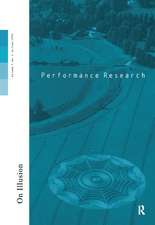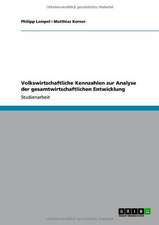The Financial Markets of the Arab Gulf: Power, Politics and Money: Routledge International Studies in Money and Banking
Autor Jean Francois Seznec, Samer Mosisen Limba Engleză Paperback – 18 dec 2020
By assessing the development of institutions like the Abu Dhabi Investment Authority, the Saudi Arabian Monetary Authority, the Public Investment Fund and the National Bank of Kuwait, The Financial Markets of the Arab Gulf evaluates the growth of the markets and provides a detailed, critical, snapshot of the current form and function of the Gulf’s financial markets. It argues that the markets have been controlled by various state institutions for socio-political reasons. In particular, the Saudi state has used its sophisticated regulatory regime to push for industrialization and diversification, which culminated in the Vision 2030 plan. The UAE, Qatar, Kuwait, Bahrain and Oman have also been strongly involved in establishing modern markets for similar purposes but have done so through different means, with varying results, and each in line with what has been considered their respective comparative advantages.
Along with critically surveying these institutions and their role in global finance, the book also presents case studies depicting transactions typical to the region, including the highly profitable documentary credits of commercial banks, the financial scandal of certain financiers and their regulatory arbitrage between Bahrain and Saudi Arabia, a review of the Dubai’s trade miracle, and an assessment of the value and importance of the privatization of Saudi Aramco.
| Toate formatele și edițiile | Preț | Express |
|---|---|---|
| Paperback (1) | 258.91 lei 6-8 săpt. | |
| Taylor & Francis – 18 dec 2020 | 258.91 lei 6-8 săpt. | |
| Hardback (1) | 764.45 lei 6-8 săpt. | |
| Taylor & Francis – 6 noi 2018 | 764.45 lei 6-8 săpt. |
Din seria Routledge International Studies in Money and Banking
-
 Preț: 309.94 lei
Preț: 309.94 lei -
 Preț: 326.26 lei
Preț: 326.26 lei -
 Preț: 284.40 lei
Preț: 284.40 lei -
 Preț: 313.60 lei
Preț: 313.60 lei -
 Preț: 311.41 lei
Preț: 311.41 lei -
 Preț: 307.47 lei
Preț: 307.47 lei -
 Preț: 313.17 lei
Preț: 313.17 lei -
 Preț: 341.55 lei
Preț: 341.55 lei -
 Preț: 309.87 lei
Preț: 309.87 lei -
 Preț: 310.84 lei
Preț: 310.84 lei - 9%
 Preț: 864.83 lei
Preț: 864.83 lei -
 Preț: 665.08 lei
Preț: 665.08 lei - 18%
 Preț: 1175.01 lei
Preț: 1175.01 lei - 18%
 Preț: 1122.64 lei
Preț: 1122.64 lei - 18%
 Preț: 1056.00 lei
Preț: 1056.00 lei - 18%
 Preț: 1067.14 lei
Preț: 1067.14 lei - 24%
 Preț: 148.98 lei
Preț: 148.98 lei - 25%
 Preț: 503.80 lei
Preț: 503.80 lei - 18%
 Preț: 1058.79 lei
Preț: 1058.79 lei - 26%
 Preț: 820.40 lei
Preț: 820.40 lei - 18%
 Preț: 1058.79 lei
Preț: 1058.79 lei - 26%
 Preț: 821.46 lei
Preț: 821.46 lei - 18%
 Preț: 1057.40 lei
Preț: 1057.40 lei - 26%
 Preț: 765.01 lei
Preț: 765.01 lei - 18%
 Preț: 1056.28 lei
Preț: 1056.28 lei - 15%
 Preț: 254.03 lei
Preț: 254.03 lei - 18%
 Preț: 1064.70 lei
Preț: 1064.70 lei - 18%
 Preț: 1113.25 lei
Preț: 1113.25 lei - 18%
 Preț: 702.31 lei
Preț: 702.31 lei - 18%
 Preț: 1166.68 lei
Preț: 1166.68 lei - 26%
 Preț: 849.37 lei
Preț: 849.37 lei - 18%
 Preț: 1116.38 lei
Preț: 1116.38 lei - 25%
 Preț: 851.99 lei
Preț: 851.99 lei - 18%
 Preț: 1060.87 lei
Preț: 1060.87 lei - 25%
 Preț: 823.57 lei
Preț: 823.57 lei - 18%
 Preț: 1119.16 lei
Preț: 1119.16 lei - 25%
 Preț: 824.53 lei
Preț: 824.53 lei - 26%
 Preț: 1188.26 lei
Preț: 1188.26 lei - 25%
 Preț: 853.07 lei
Preț: 853.07 lei - 18%
 Preț: 1114.30 lei
Preț: 1114.30 lei -
 Preț: 418.22 lei
Preț: 418.22 lei - 25%
 Preț: 857.93 lei
Preț: 857.93 lei - 18%
 Preț: 1065.75 lei
Preț: 1065.75 lei - 18%
 Preț: 1168.76 lei
Preț: 1168.76 lei - 18%
 Preț: 1058.79 lei
Preț: 1058.79 lei - 25%
 Preț: 854.14 lei
Preț: 854.14 lei - 18%
 Preț: 1059.48 lei
Preț: 1059.48 lei - 18%
 Preț: 1240.95 lei
Preț: 1240.95 lei - 26%
 Preț: 1187.46 lei
Preț: 1187.46 lei
Preț: 258.91 lei
Preț vechi: 310.85 lei
-17% Nou
Puncte Express: 388
Preț estimativ în valută:
49.55€ • 51.53$ • 41.47£
49.55€ • 51.53$ • 41.47£
Carte tipărită la comandă
Livrare economică 15-29 martie
Preluare comenzi: 021 569.72.76
Specificații
ISBN-13: 9780367732738
ISBN-10: 0367732734
Pagini: 230
Dimensiuni: 156 x 234 mm
Greutate: 0.4 kg
Ediția:1
Editura: Taylor & Francis
Colecția Routledge
Seria Routledge International Studies in Money and Banking
Locul publicării:Oxford, United Kingdom
ISBN-10: 0367732734
Pagini: 230
Dimensiuni: 156 x 234 mm
Greutate: 0.4 kg
Ediția:1
Editura: Taylor & Francis
Colecția Routledge
Seria Routledge International Studies in Money and Banking
Locul publicării:Oxford, United Kingdom
Public țintă
PostgraduateCuprins
- A Short History of the Financial Markets in the GCC States
The Commercial Banks
The Islamic Banks
The Money Changers
The Bahraini Offshore Market
The Capital Markets
Conclusion - The Financial Markets of the United Arab Emirates
Dubai versus Abu Dhabi
The UAE’s Regulatory Environment
Free Trade Zones
The Banking Sector
Sovereign Wealth Funds
SWFs, Power Patronage and Asset Ownership
Conclusion - The Financial Markets of Saudi Arabia
SAMA and the Regulatory Environment
The Capital Markets
The State Controlled Financing Companies
The Money Changers
The Commercial Banks
Conclusion - The Financial Markets of Bahrain, Qatar, Kuwait and Oman
4.1 The Financial Markets of Bahrain
The Banking Sector
The Capital Markets
Islamic Financial Regulation: A New Niche?
Bahrain’s Unique Natural Resource
Conclusion
4.2 The Financial Markets of Qatar
Qatar’s Energy Markets
Trade and the Embargo
The Banking Sector
The Capital Markets
The Qatar Investment Authority
Conclusion
4.3 The Financial Markets of Kuwait
The National Assembly
The Capital Markets
The Banking Sector
Sovereign Wealth Funds
SWFs in Crises: The KIO and the Gulf War
Conclusion
4.4 The Financial Markets of Oman
Qaboos’s Elite Bargain
A New Challenge
Natural Resources and Diversification
The Banking Sector
The Capital Markets
Conclusion - The Gulf States in Global Financial Markets
Phase 1: 1960-1985
Phase 2 1985-Present
2008: Shifting Tones
Lasting Change
Looking East: Energy Investments in Asia and Southeast Asia
Conclusion - Case Studies
Introduction
6.1 The Saudi Aramco Privatization
Valuation
Transparency through Privatization
To IPO, But Where?
Conclusion
6.2 Name Lending and the TIBC Bankruptcy
Background
Regulatory, Personality or Practice: Who is At Fault?
Conclusion
Name Lending: A Primer
6.3 Dubai as a Financial Safe Haven
Indian Gold Smuggling
Iranian Trade Links
Conclusion
6.4 Documentary Credits
The Mechanics
Profitability
Conclusion - Conclusion
Notă biografică
Dr. Jean-François Seznec is Senior Fellow, Center for Global Energy at the Atlantic Council, Adjunct Professor at Johns Hopkins School of Advanced International Studies and Managing Director at The Lafayette Group.
Samer Joseph Mosis is a Senior Analyst with S&P Global Platts focusing on commodity markets. He previously was a Consultant for The Lafayette Group and holds a Masters Degree in International Economics from Johns Hopkins School of Advanced International Studies
Samer Joseph Mosis is a Senior Analyst with S&P Global Platts focusing on commodity markets. He previously was a Consultant for The Lafayette Group and holds a Masters Degree in International Economics from Johns Hopkins School of Advanced International Studies
Descriere
This book focuses on the most developed financial markets in the region. It deconstructs each market’s key components and their respective socioeconomic implications. It discusses how these components interact with foreign actors and markets.


